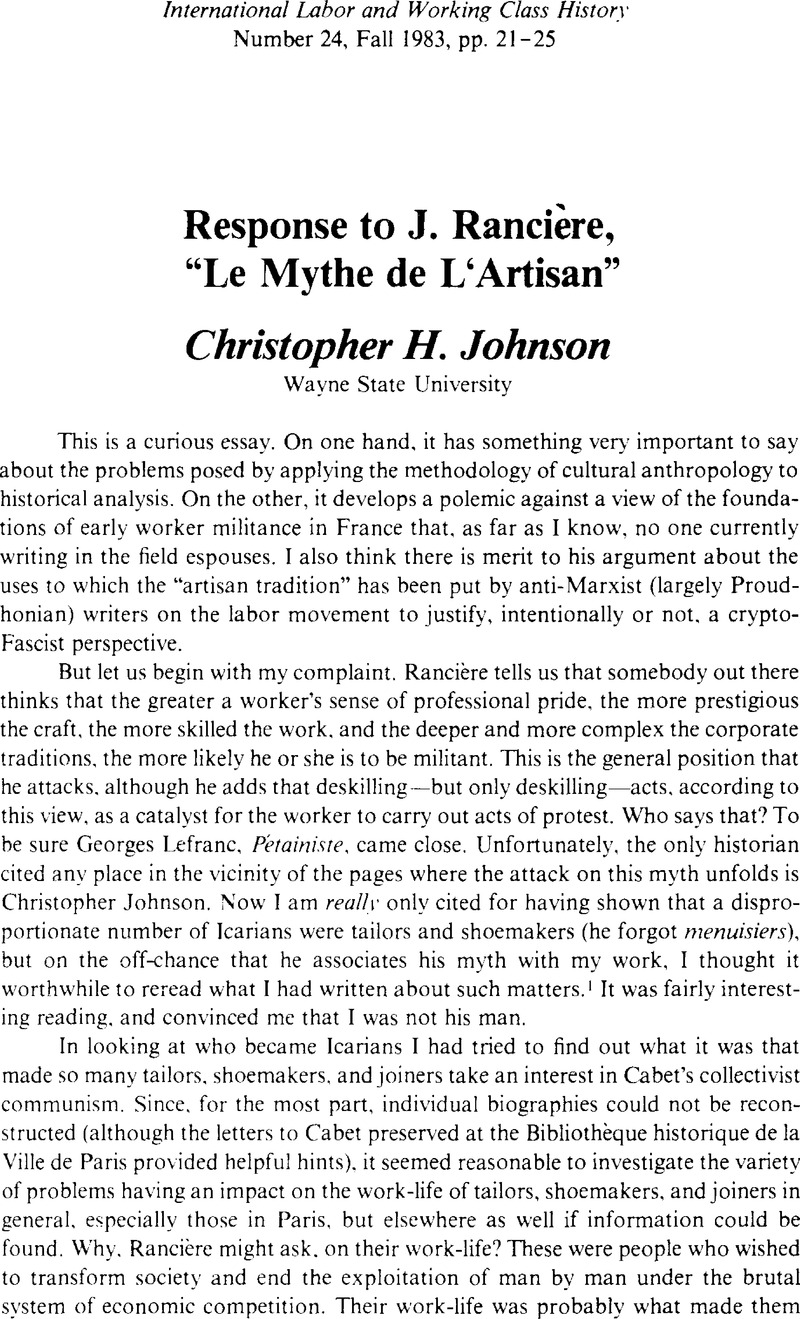No CrossRef data available.
Published online by Cambridge University Press: 16 December 2008

1. I also included my “Patterns of Proletarianization: Parisian Tailors and Lodeve Woolens Workers,” in Merriman, John M., ed., Consciousness and Class Experience in Nineteenth-Century Europe (New York, 1979)Google Scholar. The Main section in Utopian Communism is pages 175–84.
2 See especially Utopian Communism in France, 181–82. in which I conclude the entire discussion of the reasons behind worker adherence to Icaranism with a description of the grim and harried life of Coriot. an Icarian journeyman shoemaker.
3. For Karl Marx's discussion of the proletarianization of the handicrafts, see Capital (New York. 1936). Vol. I. 395–404Google Scholar. One must also read the superb book by Aminzade, Ronald. Class, Politics, and Early Industrial Capitalism, a Study of Mid-Nineteenth Century Toulouse (Albany. 1981). especially his concluding chapterGoogle Scholar.
4. Sewell, “La classe ouvrière de Marseille sous la Seconde République: structure sociale et comportement politique,” Mouvement social (July 1971). 27–63. He even uses the terms “open” and “closed” trades and finds tailors and shoemakers in the former group, portefaix on the docks in the latter.
5. Festy, Octave. “Dix ans d'histoire corporative des ouvriers tailleurs d'habits (1830–1840).” Revue d'histoire des doctrines economique et sociale. V (1912), 166–99Google Scholar.
6. Rose, . Servants of Post-Industrial Power? Sociologie du Travail in Modern France (White Plains. N.Y., 1979)CrossRefGoogle Scholar.
7. Hanagan, Michael, The Logic of Solidarity: Artisans and Industrial Workers in Three French Towns. 1871–1914 (Urbana. 1980)Google Scholar.
8. Hinton, . The First Shop Stewards' Movement (London, 1973). 337Google Scholar.
9. Scott, Joan. The Glassworkers of Carmaux (Cambridge, Mass., 1974). 186Google Scholar.